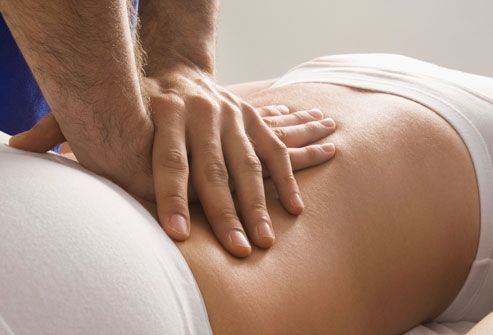Lordosis is deviations of the spine from the sagittal (anteroposterior) plane, having the convexity of the anteriorly oriented curvature. The patient with lordosis presents for consultation, mainly for pain in the lower lumbar region or the thoracolumbar region. Another important symptom is the deformity of the lumbar region, associated with the prominence of the abdomen.
The classification of lordosis is done according to the following criteria:
1. After the moment of the appearance of the lordosis they can be:
- primary: when the column deviation appears as the first sign
- secondary: when the deviation of the column appears after another condition that can induce a deficiency of the column
2. According to the evolutionary prognosis, the lordosis is classified according to the degree of curvature:
- 1st degree (light): between 20-40 °
- 2nd degree (average): between 40-60 °
- grade III (severe): above 60 °
3. After the presence of pain lordosis can be:
- painful: in the case of lordotic attitudes or post-traumatic lordosis
- painless: in the case of congenital lordosis
4. After topography, the lordosis can be:
- typical: when the lordotic deviation appears as an accentuation of the physiological lordosis of the lumbar region
- atypical: when the lordotic deviation appears in other regions of the spine: cervico-dorsal, dorsal or dorso-lumbar
5. Depending on the length of the affected column segment and the number of vertebrates involved in lordosis deficiency, they can be:
- short: when the deficiency of the spine is limited to 3-4 vertebrae
- long: when the deficiency encompasses the entire spine
6. After the mechanism of production and structural damage the lordosis can be:
- functional: when the deviation of the column does not show structural changes in the elements of the spine
- pathological: when the deviation presents structural changes
THE TREATMENT OF LORDS
The treatment of lordosis is done by kinetotherapy in the case of functional lordosis and by orthopedic, less surgical means, in the pathological lordosis.
Kinetotherapy has the following objectives:
- The softening of the spine by toning under shortening of the muscles of the anterolateral wall of the abdomen and under prolonged conditions of the lumbosacral muscle.
- Restoring the position of the basin.
- Correction of deficiencies in the trunk and lower limbs to obtain a correct and stable attitude.
- Prevention or correction of kyphosis may appear compensatory in the dorsal region.
- Preparation of the body for pre and post other types of treatment (surgical or orthopedic).
The means used in recovery are:
- static exercises consisting of maintaining some corrective and hypercorrective positions of the lumbar spine, pelvis, lower limbs
- dynamic exercises for all regions (head, upper limbs, trunk, lower limbs). Applicative exercises are used (walking, shooting, suspension, balance)
- breathing and recovery exercises (self-control)
At the Physiotherapy clinic in Dwarka, the best doctors and therapists are available for the treatment of lordosis, from the initial consultation to the treatment and complete medical recovery.

